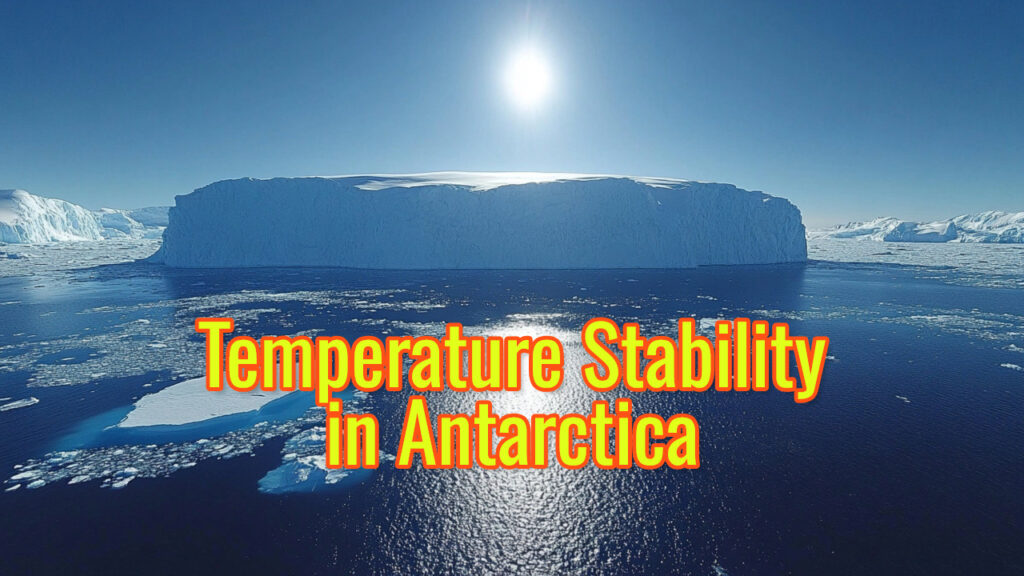Introduction to Antarctic Sea Ice Claims
The narrative surrounding Antarctic sea ice has garnered significant attention in recent discussions regarding climate change. Critics like Tony Heller argue that mainstream scientific claims about the decline of Antarctic sea ice are often exaggerated or misleading. This essay explores Heller’s key points regarding the Antarctic sea ice extent and the claims made by academics and the media.
Historical Context of Sea Ice Extent
Heller notes that claims regarding the extent of Antarctic sea ice are not new. For example, in 2004, a UK government scientist predicted that Antarctica would become the only habitable place on Earth, a statement that contrasts sharply with current observations. Heller emphasizes that the recent Antarctic sea ice extent is approximately average compared to data from 1978, highlighting inconsistencies in climate predictions over the decades. In 1966, data indicated a lower sea ice extent than what is being reported today, which Heller argues undermines the assertion that current levels represent a historical low.
Recent Trends and Data Discrepancies
The video discusses the fluctuations in Antarctic sea ice extent, contrasting the claims made for 2023 with historical data. For instance, while academics asserted that 2023 experienced the lowest winter sea ice extent in 7.5 billion years, Heller points out that this is factually incorrect, as 1966 had lower extents. He further notes that recent summers have shown higher sea ice extents than previous years, contradicting media narratives of a disappearing ice cap.
Media Representations and Predictions
Heller criticizes various media outlets, such as The Guardian, for disseminating what he terms “propaganda” regarding Antarctic sea ice. He cites a prediction made in September 2024 about record-low summer sea ice, which did not materialize. Instead, current data shows that the extent of Antarctic sea ice has remained higher for many years since 1978. This discrepancy raises questions about the reliability of climate predictions and the motivations behind sensationalized reporting.

Conclusion on Climate Narratives
Heller concludes that the portrayal of Antarctic sea ice in contemporary discourse is often misleading, driven by financial incentives for journalism and academic funding. He argues that despite claims of Antarctica “turning green,” satellite images reveal no substantial changes in the region’s ice cover. As temperatures in Antarctica have remained stable for over seventy years, Heller urges a reevaluation of the narratives that dominate climate discussions, advocating for a more accurate representation of data and trends.
Key Insights
Antarctic Sea Ice Trends
- Antarctic sea ice extent has remained near average since 1978, contradicting claims of unprecedented decline.
- In 2023, winter sea ice extent was reported as the lowest in 7.5 billion years, despite lower recorded extents in 1966.
- Comparatively, the extent of summer sea ice is currently more significant than in 1976, when global cooling was a concern.
Claims and Counterclaims
- Media outlets have been criticized for disseminating information about disappearing Antarctic sea ice, often labeled as propaganda.
- Predictions of record low summer sea ice in 2024 were made, yet actual measurements show higher extents than most years since 1978.
- The British Antarctic Survey’s claims have been described as misleading, with actual data showing no significant decrease in ice coverage.

Historical Context of Climate Narratives
- Historical references highlight past climate concerns, such as the 1974 CIA worries about a new Ice Age, which contrasts sharply with current narratives.
- Notable publications in the 1970s speculated on imminent cooling, showcasing a shift in climate narratives over decades.
- Recent satellite imagery challenges current claims of Antarctica “turning green,” indicating no significant vegetation growth.
Temperature Stability in Antarctica
- Data suggests that there has been no significant change in Antarctica’s temperature over the past 70 years.
- This stability calls into question the urgency of climate change narratives centered on Antarctic conditions.
- The lack of temperature variation undermines claims of drastic environmental shifts impacting the continent.

Thanks for Reading
Steven G Smith






More Stories
Climate Scientist Reveals Pressure to Omit Key Truths in Research on Wildfires and Climate Change in Controversial Essay.
Why Socialism Makes Government Corruption Worse
Understanding Climate Change Through Geology: Insights from Ian Plimer’s “Climate Change: The Facts 2025”